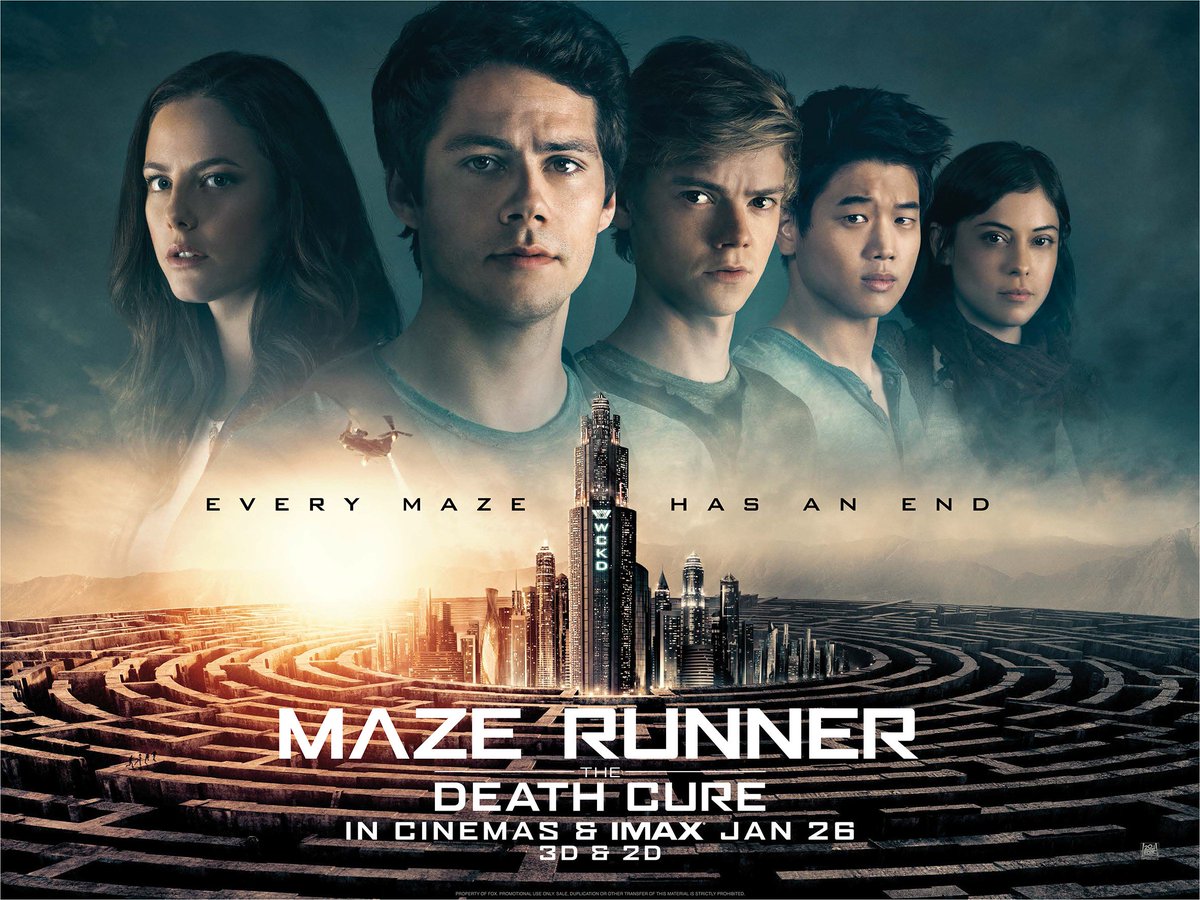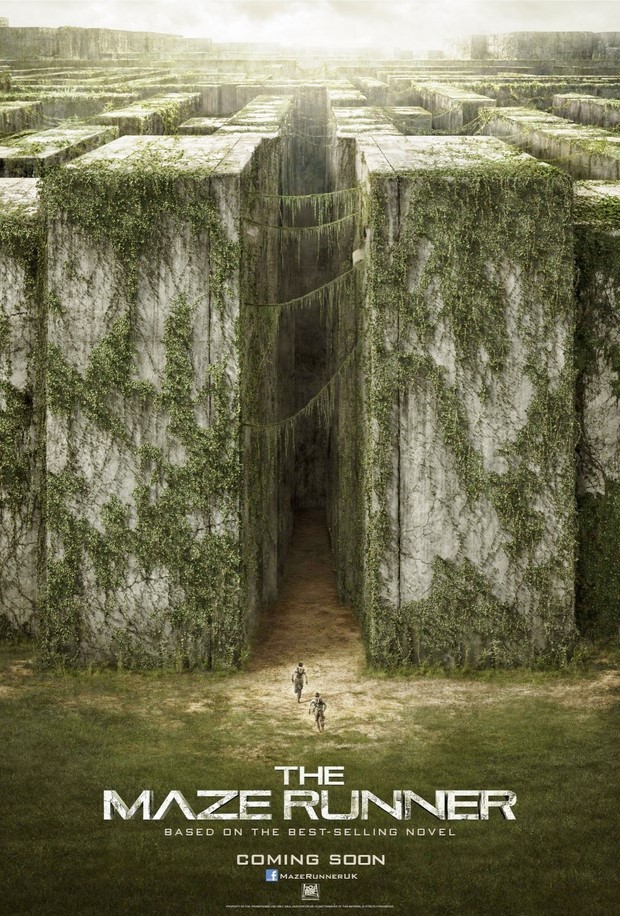
The Maze that bridged the gap into a new age of sensibility for YA.

The “Divergent Series: Allegiant” may have been far from the
first failure of a cinematic adaptation of Young Adult material but the film is
unarguably one of if not the highest profile failure of its genre in the
current age.
Irresponsibly bloating production budgets beyond the
sustainable profit margin of the inaugural entry (i.e. the highest grossing one)
for a series whose only supportive audience still healthily criticizes its
source material set the stage for the failure of a film franchise that actually
managed to take off beyond its first installment only to sputter out on an
anticlimax thanks to the greedy decision to split the final book into two
movies.
The resulting critical thrashing and box office flop that
followed has not only left its studio licking its wounds but it even
effectively killed the multi-pack movie concept by being a bomb while setting
up a final payoff that will never come to fruition.
For all the insults both deserved and hyperbolic that can be
thrown at “Twilight,” at least that franchise managed to actually finish its
story.
The fall of the “Divergent Series” was a clear indication of
shifting dynamics regarding the sustained popularity of Young Adult in
mainstream visually driven media, representing the downfall of the mega
franchise, especially when your product isn’t catching on with audiences
outside of the built in cult following fandom, and possibly even a desire to
move towards a production mold smaller in scale if not at least a bit more
authentic.
Punctuating this is the success of a similar dystopian
series winding down amidst the plans for “Divergent” being thrown into utter
chaos.

Waking up in a glade with a group of amnesiac boys, newcomer
Thomas works his way up the social ladder by becoming a “runner,” members of
the group designated to navigate the ever shifting labyrinth loaded with deadly
traps and mechanical predators in hopes of finding their way out and
reconnecting with civilization.
Upon escaping the maze, the boys soon realize they were
placed into it for testing purposes by the government as a means of monitoring and
studying their mental and physical activity.
All of the children selected for these trials are done so
for their genetic immunity to a zombie like plague that has spread across the
planet due to radiation induced mutation referred to as “The Flare virus.” With
the revelation that his friends and their suffering is carried out in the self righteous
name of saving humanity, Thomas leads his friends on the run from the government
organization WCKD figure out if their intentions are truly as noble as they
claim, despite their heinous actions.
Although the “Maze Runner” series never managed to see the
steady critical acclaim of “The Hunger Games” or “Harry Potter,” it still
manage to stay afloat just long enough to see completion. It’s my theory that
this success stems from 2 areas that producers of this genre should take note
of.

Relative to the audience that it was produced for, the “Maze
Runner” series is fairly grittier than most of its contemporaries in the YA
field.
Death is far more explicit, graphic, and prevalent than in
most high profile stories, not shying away from the fact that a group of
teenagers attempting to survive a decaying apocalyptic world while trying to
overthrow a corrupt and resourceful government would not look very pretty. The
films are essentially a few shots and some language choices away from being
R-rated thrillers.
While a certain level of glossy stylization found in films
such as “The Divergent Series,” “The Mortal Instruments: City of Bones,” and
even areas of “The Hunger Games” series is a bit of a typical indicator of the
escapist fiction that this source material typically aims to be, the levels of tension
and explicit nature of the content adds a substantial layer of authenticity
that sets it apart from other series and giving it more of an identity than its
failed contemporaries.
The plots may be fairly thin but are focused, tense and
atmospheric in ways that are atypical of a PG-13 genre aiming to simulate mature
content in a softer context for a younger audience. The subsequent tale that
plays out feels a bit more intimate and grounded than the usual attempts at
sprawling epics for the genre, despite a noticeable deficiency in strong
character dynamics.
“Maze Runner’s” ambitions may not have been particularly
high but its earnest execution, as well as interestingly tapping into a more
male oriented demographic of the genre not often put to the forefront, provide
it with an identity that was just low key and unique enough to bolster it to
the completion of its concise story. It represents a substantial receptiveness
to more pulled back narratives for the genre and its success is indicative of a
necessary change on the business level that the entertainment industry seems to
be catching up with.

The final and most notable aspect of “Maze Runner” and its
success is something that all producers can learn from, YA or otherwise. More
specifically, the collective budget of the series is about 20% of its nearly $1
billion box office gross and sales revenue.
While the series its self is low key as to not have clearly
inspired change directly, it does provide a fascinating case study regarding
the lessons that a genre has to learn, leading to subsequent failures that didn’t
learn that lesson, as well as a shift to a more intimate and inexpensive format
more attuned to its audience and storytelling style, such as television.
Even as the settings and nature of each individual
installment change, “Maze Runner” manages to keep all of its production budgets
under the $80 million mark. It did need a bloated budget and triple A names;
simply effective thrills and a market supporting them.
No comments:
Post a Comment